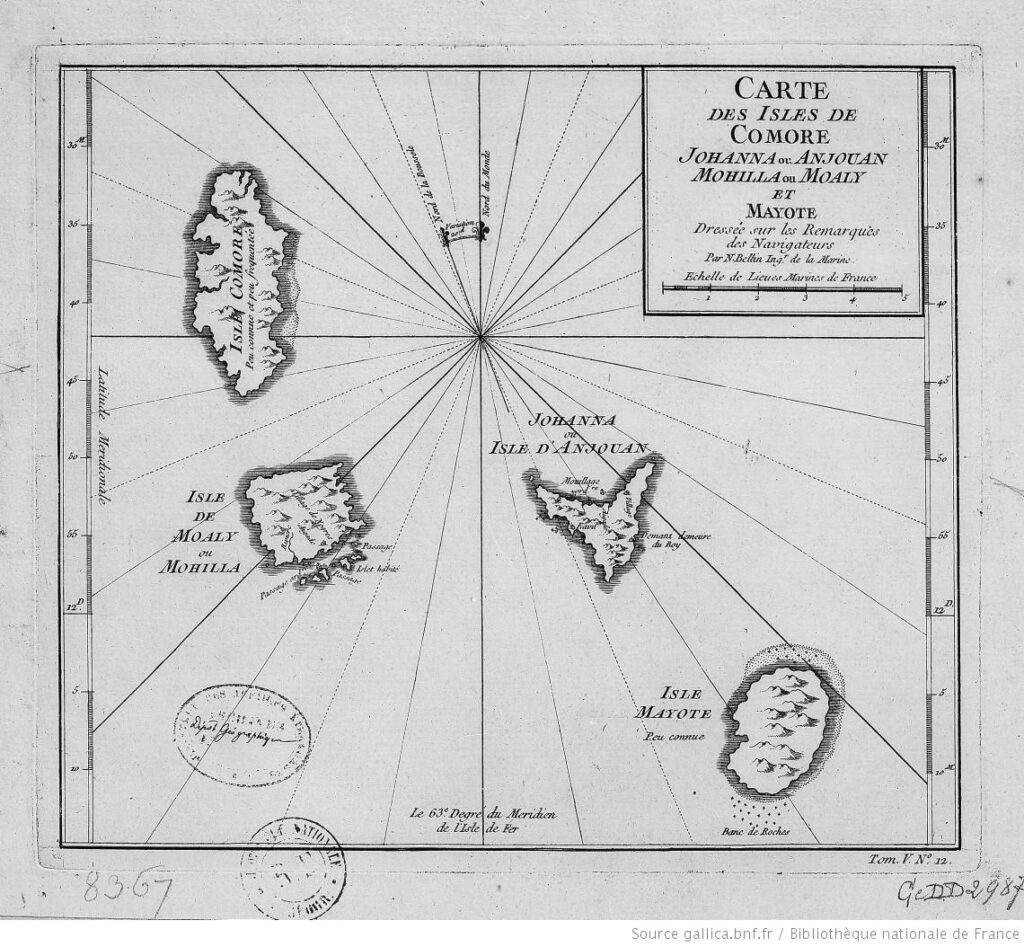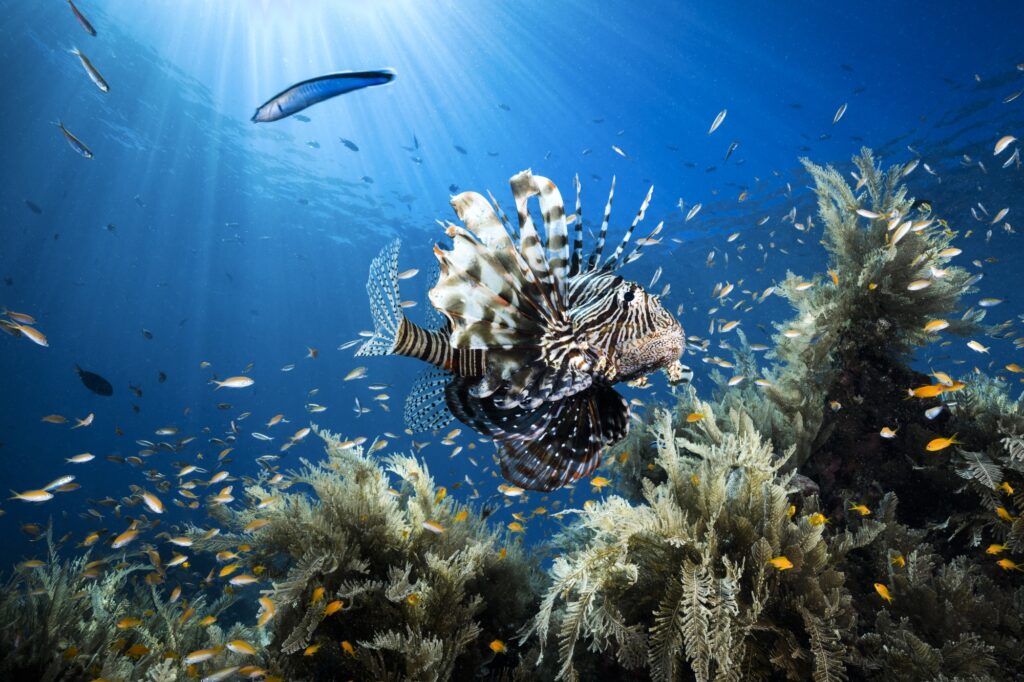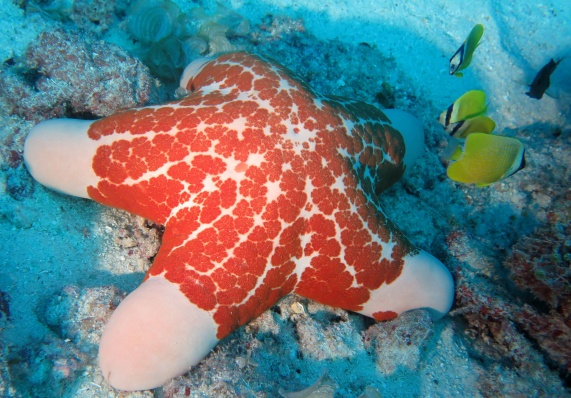Surprised by Comoros’
undiscovered beauty
Teeming Sealife
The reefs surrounding the Comoro Islands, especially those of the Mohéli National Park, are among the most vibrant in the world. This natural wonder was given international recognition and protection in 2020 when the entire island of Mohéli was designated a UNESCO biosphere. While many reefs around the world are suffering from coral die-off, or bleaching, Mohéli’s reefs remain healthy and flourishing. These colorful and thriving corals support a complex marine ecosystem including anemones, rock lobsters, nudibranches, frog fish, dolphins, manta rays, sea turtles, large schools of reef fish, and seasonal humpback whales.
Volcano-shaped Landscape
The Comoro Islands were created by repeated volcanic eruptions over the millenia, and the volcano remains a dominant presence in the islands today. Mt. Karthala dominates the skyline of Grande Comore, and a hike to the summit offers the discovery of many natural habitats as well as unparalleled views across the island and the ocean beyond. But the volcano theme is not limited to Karthala: the entire island is covered with volcanic remnants, from the large craters which form Lac Salé and The Dragon’s Back, to the dozens of small cones which cover the La Grille massif.
Trekking the mountains and hills of all three islands offers peaceful opportunities to soak up the sun, listen to the call of endemic birds, and examine unique flora. Come be surprised by the tranquility of what was once an explosive land pushed up from the very heart of the earth.

A History of Mystery
The Land of the Sultans, with its mysterious origins and eventful history, is full of surprises to be investigated. Few know that in 1697 the legendary pirate Captain Kidd spent several weeks on Mohéli and that 40 of his crew are buried there (perhaps with some pirate treasure, as well!?). Or that 200 years ago slave raiding left some of the islands virtually uninhabited. For most of the 17th and 18th centuries the island of Anjouan was a crucial stopover point for the British Empire’s development of their colony in India. Comoros even features in American history as an important resupply point for the New England whaling ships, and at one point the island of Anjouan was attacked and bombarded by the US Navy.
While little known in the 21st century, Comoros has a rich and colorful history in which it played an important role in international trade and exploration. Come discover what other surprises it holds.
Rich in Culture
With Polynesian, Persian, Arab and African influences, it should come as no surprise that Comorian culture is exotic, colorful, and exuberant. The country’s relative isolation has allowed the culture and traditions to continue to flourish to the present day. While in many tourist destinations traditional dances and ceremonies are only reproduced for tourists, when walking in a Comorian village don’t be surprised to be engulfed by a wedding procession dancing their way to the bride’s home. And don’t be surprised to be invited to dance, eat, and celebrate with your new island friends.
Come experience rich, living, welcoming culture, Comorian style.
Abounding in Flavors
In Comoros, fresh-caught seafood is king. Every day local fishermen in dugout canoes and small fishing boats bring in the day’s catch. Along village beaches and town wharves the sellers display the tempting variety of options: wahoo, yellow-fin tuna, mahi-mahi, grouper, sailfish, skipjack tuna, trevally, and barracuda. Imagine what they can do with such tantalizing ingredients: mahi-mahi steaks with coconut rice and watercress salad; barracuda in a turmeric curry; madaba (pounded manioc leaves) cooked with fish flakes and coconut milk; tuna in a tomato curry sauce with fried breadfruit; whole grilled trevally with fire-roasted coconut bread. Yes, you may have a second helping.
Colorful Clothing
The traditional kandu and kofia (for men) and shiromani (for women) are still widely worn throughout the country. Of course, weddings and ceremonies will bring out the most exotic finery, including abundant gold jewelry, which is part of a woman’s dowry. But walking down a Comorian street on any given day is a moving tapestry of fabrics, hues, and textures which remind you that you are immersed in an authentic and living culture.














